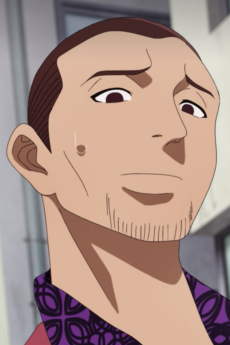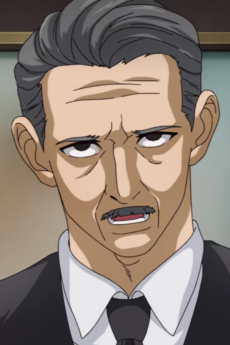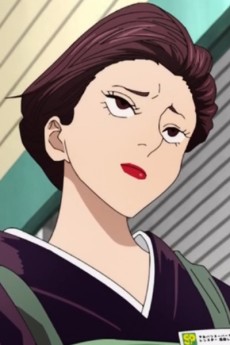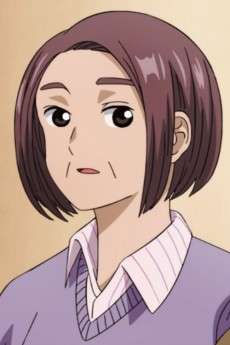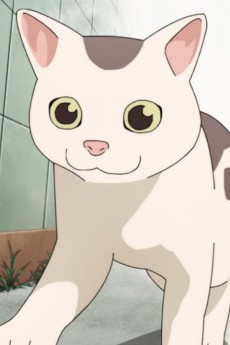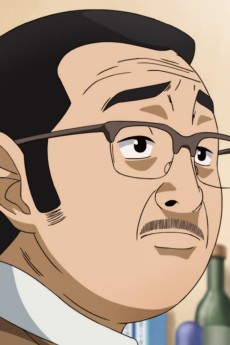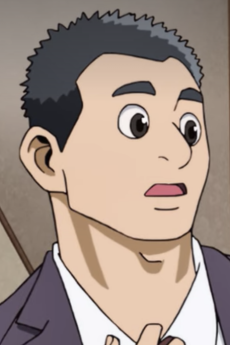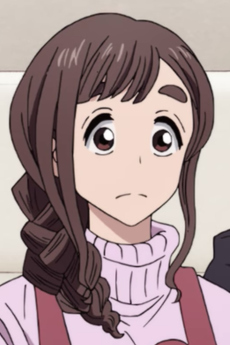
The Way of the Househusband Season 1 Hindi Subbed [10/10] | Gokushufudou Hindi Sub!!

Gokushufudou Part 2
The Way of the Househusband Part 2Synopsis
The second part of Gokushufudou.
Watch Trailer
Characters
The Way of the Househusband Season 1: A Genre-Bending Masterpiece of Humor and Heart
The Way of the Househusband (known as Gokushufudō in Japanese), a 2021 anime adaptation of Kousuke Oono’s manga, is a rare gem that defies conventional storytelling. Season 1, available on Netflix, delivers a fresh, irreverent take on the slice-of-life and comedy genres, blending yakuza grit with domestic charm in a way that feels both absurdly hilarious and profoundly relatable. This article dives deep into the show’s unique strengths, its subversive narrative, cultural nuances, and why it stands out as a next-level anime that redefines expectations—without any fluff or promotional hype.
A Premise That Breaks All the Rules
At its core, The Way of the Househusband follows Tatsu, a former yakuza legend known as the “Immortal Dragon,” who retires from a life of crime to become a devoted househusband. The premise alone is a stroke of genius: a tattooed, scar-faced tough guy trading switchblades for spatulas, navigating the perils of grocery shopping and laundry with the same intensity he once brought to gang wars. The show’s brilliance lies in its refusal to treat this setup as a gimmick. Instead, it leans into the absurdity with deadpan sincerity, creating a narrative that’s equal parts hilarious and heartfelt.
Each of the ten episodes (roughly 17 minutes each) is structured as a series of vignettes, capturing Tatsu’s daily life as he tackles domestic tasks—cooking bento boxes, mastering the Roomba, or attending a neighborhood yoga class—while his past as a feared gangster looms comically in the background. The contrast between Tatsu’s intimidating aura and his earnest dedication to homemaking is the show’s comedic engine, but it’s the underlying authenticity of his character that gives it staying power.
Why It Works: A Perfect Blend of Humor and Humanity
- Subversive Comedy That Never Punches Down
The humor in The Way of the Househusband is razor-sharp yet wholesome. Tatsu approaches household chores with the gravitas of a samurai, complete with dramatic internal monologues and yakuza slang repurposed for mundane tasks (“This stain… it’s my sworn enemy!”). The show’s comedy thrives on this juxtaposition, but it never mocks Tatsu’s efforts or belittles domestic life. Instead, it elevates the everyday struggles of housework to heroic proportions, offering a sly commentary on societal expectations around gender roles. By making Tatsu a proud househusband, the show quietly challenges stereotypes about masculinity and domesticity without ever feeling preachy. - Tatsu: A Character Study in Contradictions
Tatsu, voiced with gravelly perfection by Kenjiro Tsuda, is the heart of the show. His stoic demeanor, punctuated by sudden bursts of domestic enthusiasm, makes him endlessly watchable. Whether he’s intimidating a vacuum cleaner salesman or meticulously crafting a heart-shaped omelet for his wife, Miku, Tatsu’s unwavering commitment to his new life is both hilarious and endearing. The show also subtly explores his redemption arc—his yakuza past isn’t glorified, but it’s not vilified either. Instead, it’s a lens through which we see his growth, as he channels his intensity into love and loyalty for his family. - Miku and the Supporting Cast: Depth in Simplicity
Miku, Tatsu’s career-driven wife, is more than a foil. Her obsession with a magical girl anime (Policure) adds a layer of quirky relatability, and her dynamic with Tatsu—equal parts affectionate and exasperated—grounds the show’s absurdity. The supporting cast, including Tatsu’s former yakuza underling Masa and various neighborhood characters, adds color without overshadowing the main focus. Each character feels distinct, with their own quirks that bounce off Tatsu’s larger-than-life presence.
Visual and Technical Craft: A Divisive Yet Bold Choice
The animation style of The Way of the Househusband, produced by J.C. Staff, has sparked debate among fans. Unlike traditional anime, Season 1 employs a “motion comic” approach, with limited animation that mimics the manga’s static panels. Frames are deliberately stiff, with minimal movement and heavy reliance on voice acting and sound design to carry the energy. For some, this choice feels like a budget constraint; for others, it’s a bold stylistic decision that preserves the manga’s raw, expressive art.
The character designs, faithfully adapted from Oono’s manga, are a highlight. Tatsu’s chiseled features, perpetual scowl, and flashy suits contrast hilariously with his frilly apron, while the vibrant color palette keeps the visuals engaging. The sound design—dramatic yakuza-style music juxtaposed with mundane household sounds like sizzling pans or vacuum cleaners—amplifies the comedic tone. While the animation may not satisfy viewers craving fluid fight scenes, it suits the show’s low-stakes, character-driven vibe.
Cultural Nuances and Universal Appeal
The Way of the Househusband is steeped in Japanese culture, from Tatsu’s yakuza mannerisms to the minutiae of suburban life, like navigating sales at the supermarket or dealing with nosy neighbors. Yet, its themes of reinvention, loyalty, and finding purpose in the everyday resonate universally. The show doesn’t shy away from poking fun at Japanese societal norms—such as the expectation that women primarily handle housework—while celebrating the quiet dignity of domestic life.
One standout episode involves Tatsu attending a neighborhood women’s association meeting, where his intense demeanor both terrifies and charms the other housewives. Moments like these highlight the show’s ability to find humor in cultural specifics while making Tatsu’s fish-out-of-water experience relatable to anyone who’s ever felt out of place.
Standout Episodes and Themes
- Episode 1: The Immortal Dragon’s New Battle
The pilot sets the tone perfectly, introducing Tatsu’s domestic life with a grocery store showdown and a bento-making mission. It establishes the show’s humor and heart in under 20 minutes. - Episode 5: The Neighborhood Watch
Tatsu’s attempt to join a community patrol spirals into a yakuza-style stakeout, showcasing the show’s knack for escalating mundane situations into absurdly epic conflicts. - Episode 8: The Cat Conundrum
Tatsu’s soft spot for a stray cat reveals a tender side to his tough exterior, adding depth to his character while delivering some of the season’s best gags.
Thematically, the show explores identity and transformation. Tatsu’s journey from feared gangster to devoted househusband isn’t played for cheap laughs; it’s a genuine exploration of what it means to redefine oneself. His unwavering dedication to Miku and their home underscores the idea that purpose can be found in the smallest acts of love.
What Sets It Apart: A Next-Level Anime
The Way of the Househusband Season 1 stands out for its refusal to conform to anime tropes. It’s not a shonen epic, a romantic drama, or a pure comedy—it’s a hybrid that carves its own niche. By focusing on a retired yakuza’s domestic life, it subverts expectations of both the yakuza and slice-of-life genres. The show’s humor is universal, but its heart is deeply personal, making it accessible to casual viewers and anime enthusiasts alike.
Its brevity—ten short episodes—ensures a tight, bingeable experience with no filler. Every vignette feels purposeful, balancing comedy with character development. The show also avoids over-explaining its jokes, trusting viewers to appreciate the absurdity of Tatsu’s world.
Critiques and Considerations
The limited animation style is the most divisive aspect. Fans of dynamic anime like Demon Slayer may find the static visuals jarring, especially during action-heavy flashbacks to Tatsu’s yakuza days. Additionally, the episodic format, while charming, lacks a strong overarching plot, which might disappoint viewers seeking a more cohesive narrative. However, these choices feel intentional, prioritizing character-driven humor over traditional storytelling.
Some may also wish for more focus on Miku or the supporting cast, as Tatsu dominates the spotlight. While this keeps the show focused, it leaves room for deeper exploration of secondary characters in future seasons.
Why You Should Watch
The Way of the Househusband Season 1 is a masterclass in doing more with less. It takes a simple premise and spins it into a hilarious, heartfelt, and wholly original story that celebrates the mundane while poking fun at its own absurdity. Tatsu’s journey as a househusband is both a love letter to domestic life and a subversive take on masculinity, making it a standout in the crowded anime landscape.
Whether you’re drawn to its deadpan humor, its quirky characters, or its quietly profound themes, Season 1 offers something truly unique. It’s not just an anime—it’s a bold, genre-bending experiment that proves even the most ordinary life can be extraordinary.
Final Verdict: The Way of the Househusband Season 1 is a triumph of wit, heart, and originality. It’s a must-watch for anyone craving a fresh take on comedy and slice-of-life storytelling. Available on Netflix, it’s a quick, delightful binge that leaves you hungry for more of Tatsu’s domestic adventures.
Download Links
Quality: FHD [1080p]
Quality: HD [720p]
Quality: SD [480p]
Support Our Anime Community!
Love watching the latest anime? Help us keep uploading new episodes by join telegram channel ❤️
Join Now!
